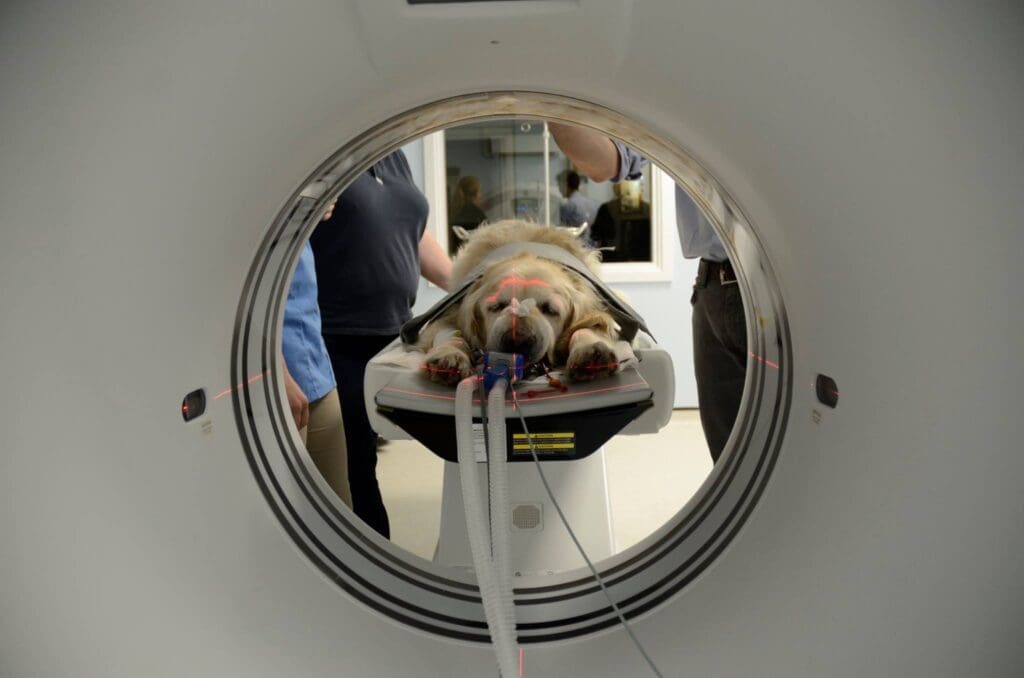Veterinary CT

What is CT and what is it used for?
Computed Tomography, more commonly known as CT, has been used in the veterinary industry since the 1980s, and has significantly altered both the diagnostic imaging landscape and the range of treatments which are possible for patients. Since the introduction of CT, the systems and software have significantly improved, resulting in better image quality and speed of image acquisition. CT now provides diagnostic images for a wide range of patients and conditions, and is regularly used in orthopaedic, trauma, soft tissue, oncology and neurology cases.
Which scanners do IMV provide?
At IMV imaging, we have a full range of CT systems, all with different capabilities. This allows us to tailor the correct imaging solution to your practice, with the help of our dedicated CT sales manager. Our most popular small animal CT system is the GE Revolution ACT. We also have a range of equine scanners from Epica, which have been specifically manufactured for the challenges of scanning equine patients.
How do I choose the best CT scanner for my practice?
In both first opinion practice and referral hospitals, a CT scanner is a fantastic addition to your diagnostic imaging options. We will work with you to select the best scanner for your needs and patient requirements. Our IMV imaging CT applications specialist is on hand to provide all the training you and your team need, and will help your practice gain the knowledge needed to run your CT system to the best of its abilities.
What building requirements do I need to consider?
When planning for your new CT scanner, building requirements are essential to bear in mind. The size and location of the scanning room, the position of the control room, radiation safety, and the electricity supply all need to be considered. Don’t worry! IMV are here to help, all the way from planning to scanning.
Using the CT scanner
Performing scouts, calibration, reconstruction, image optimisation, image management and the use of contrast are all essential steps when using your CT scanner. That’s before you consider all the patient factors, such as patient positioning (whether orthopaedic or soft t#issue) and sedation. Getting to grips with CT can seem daunting at first, but IMV imaging will guide you all the way.
Having trouble?
Our brilliant Service team can help you with any technical queries and support you through the installation process, or once your scanner is up and running. Do not hesitate to contact us with any questions you may have.
In addition to our IMV academy online and in-person CPD courses, we have a whole library of learning resources to help develop your skills.
There are our journal clubs, webinars and podcasts to start with. If you are looking for information on a specific region or indication, you can check out our list of CT learning resources below: